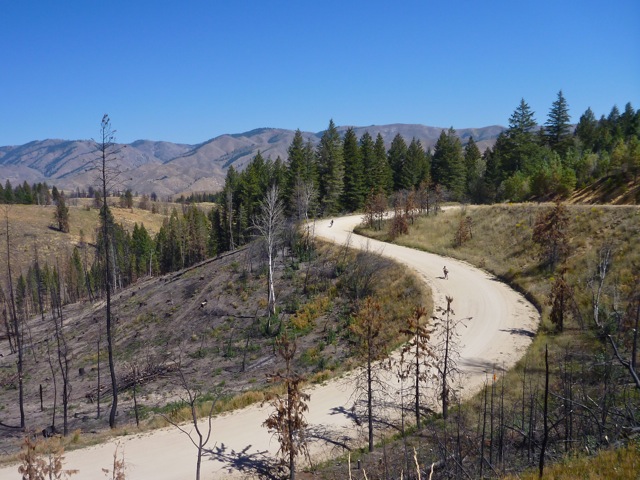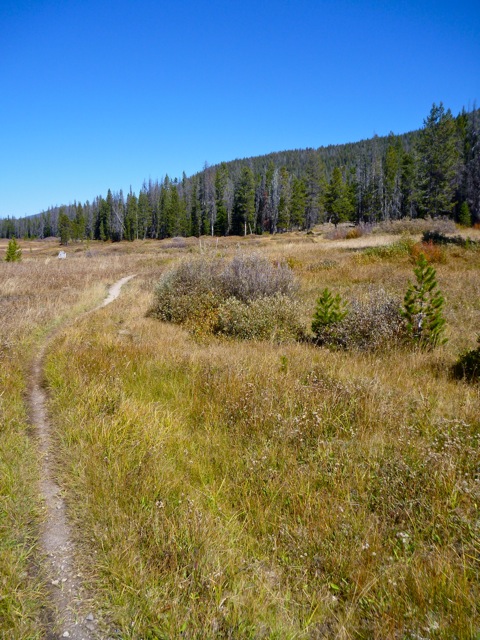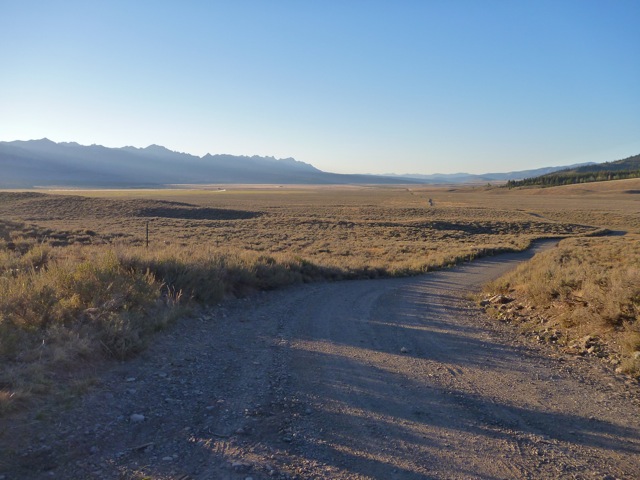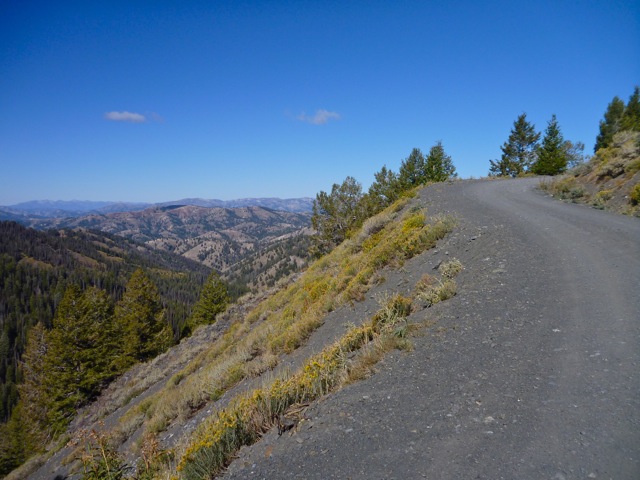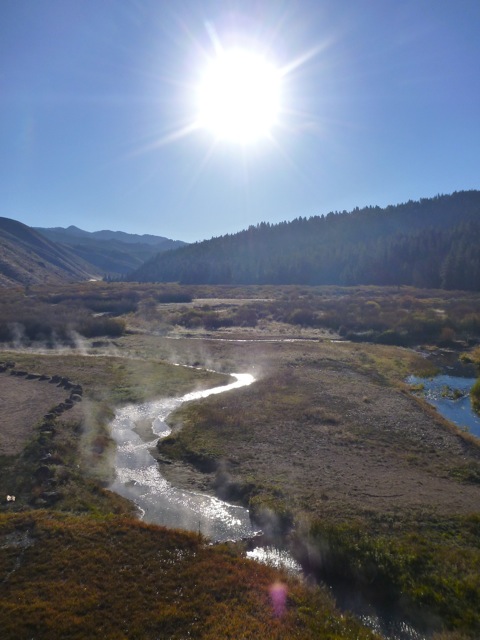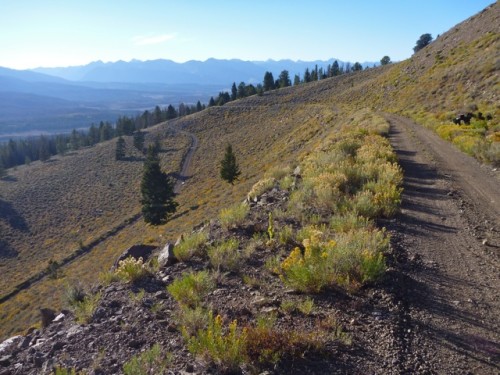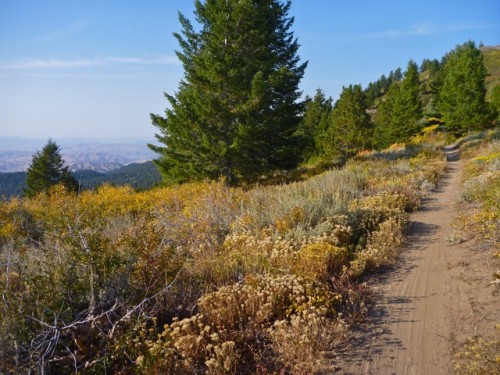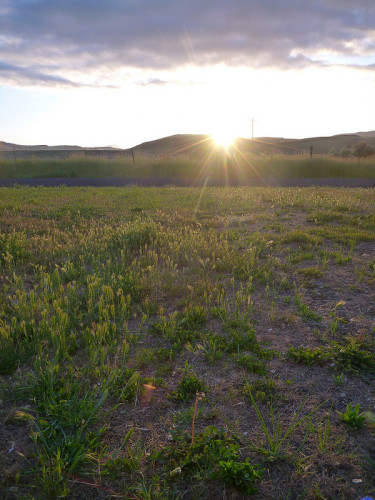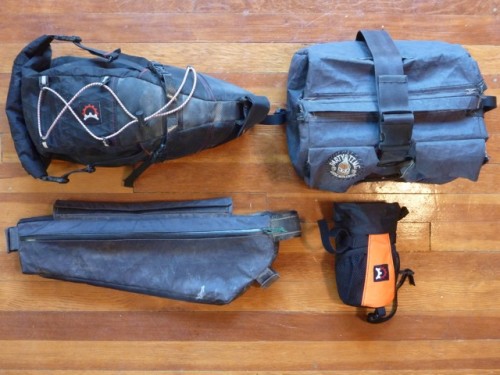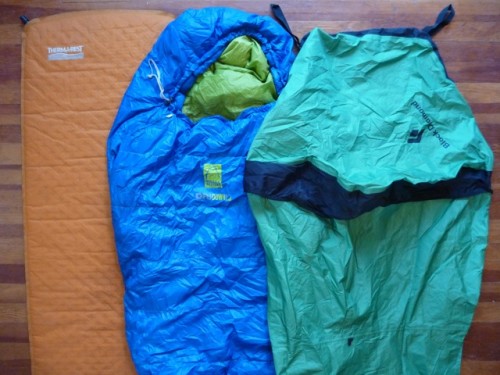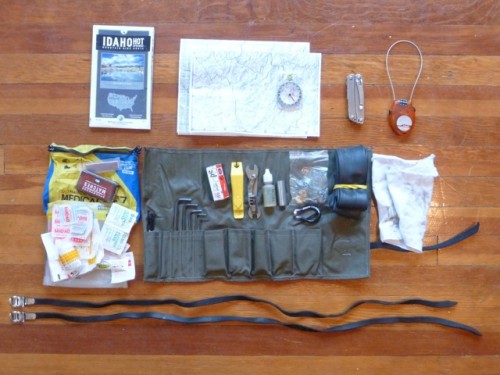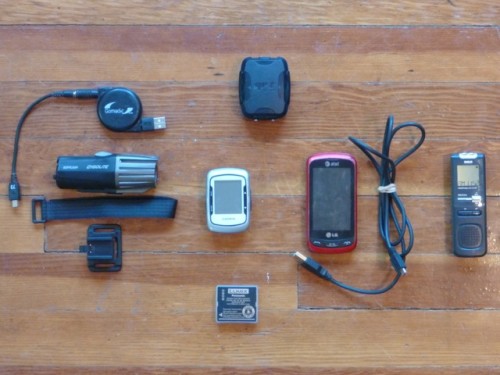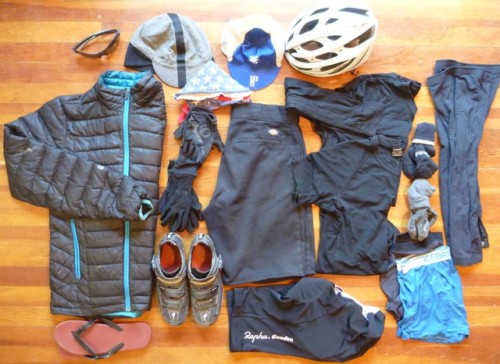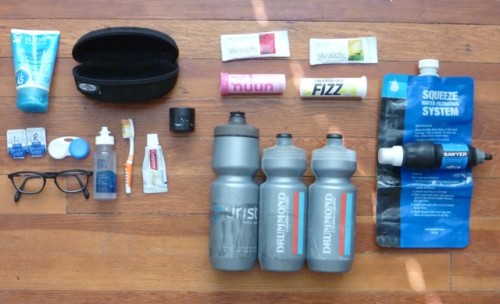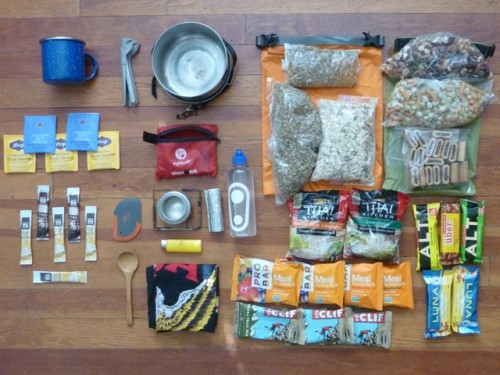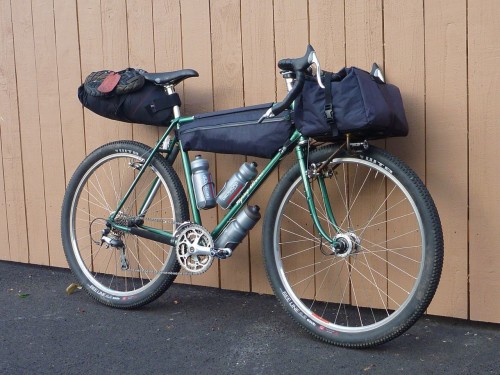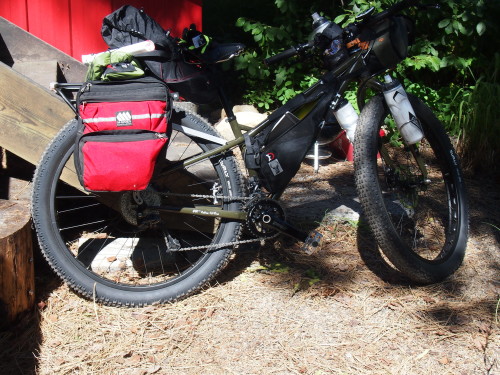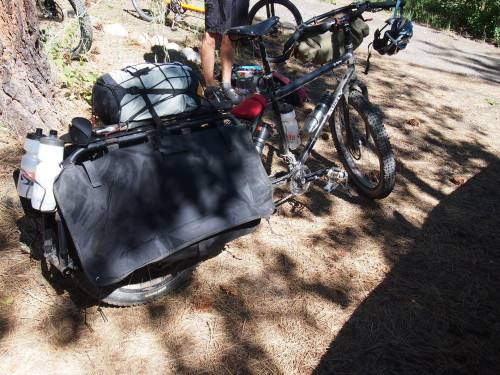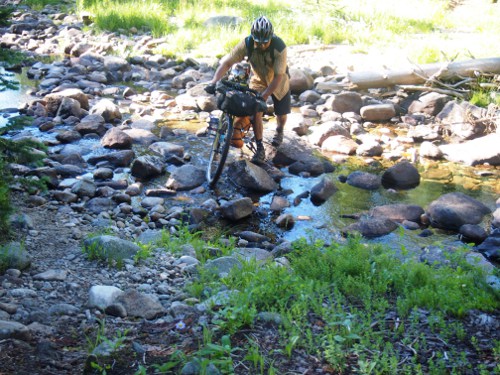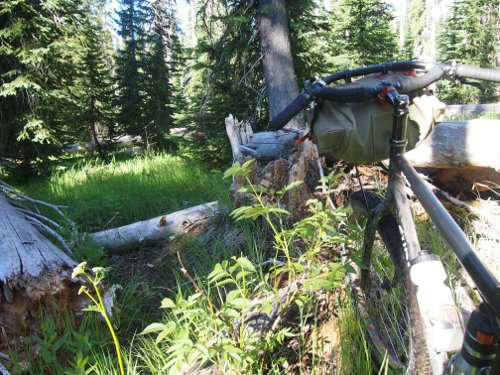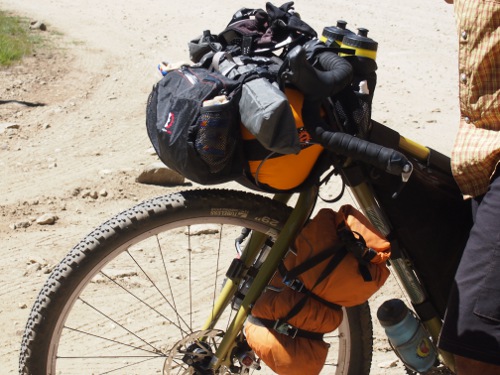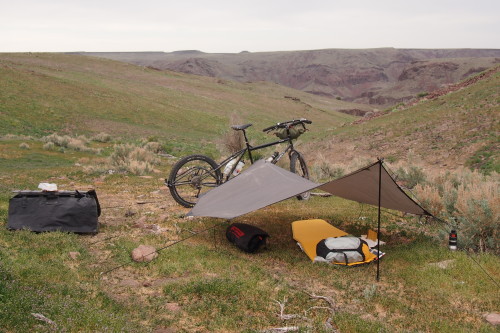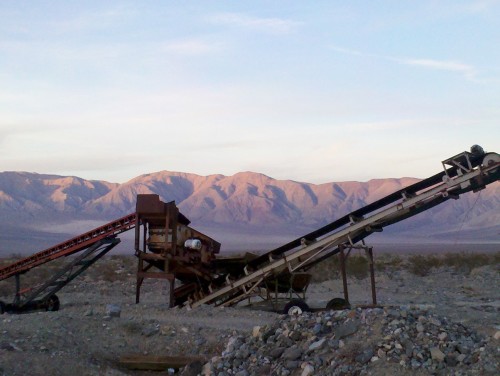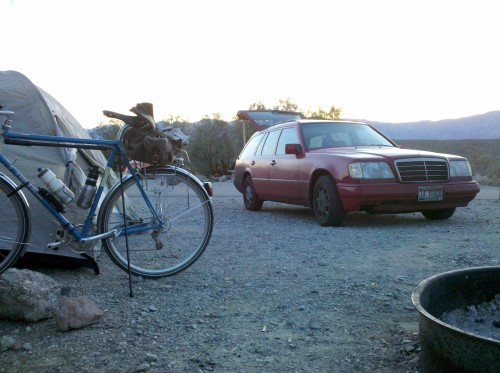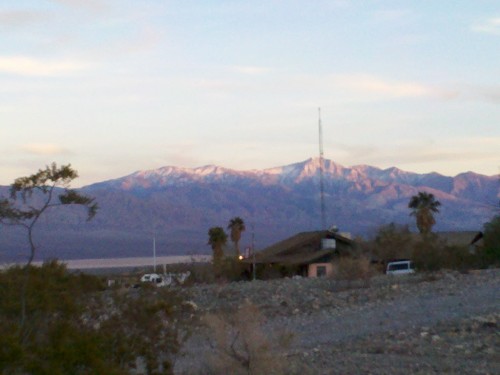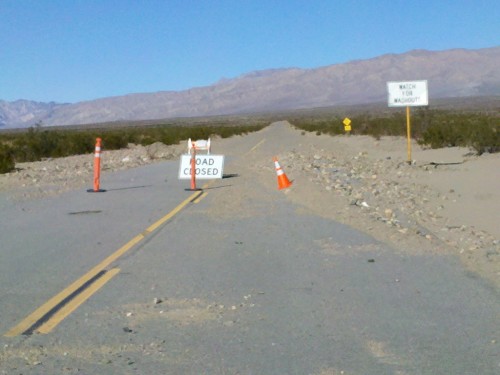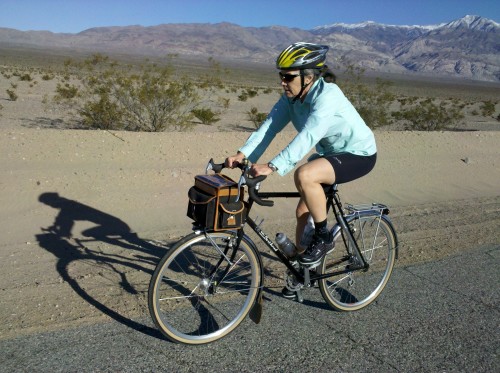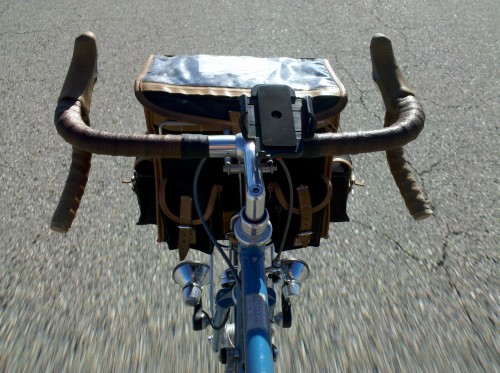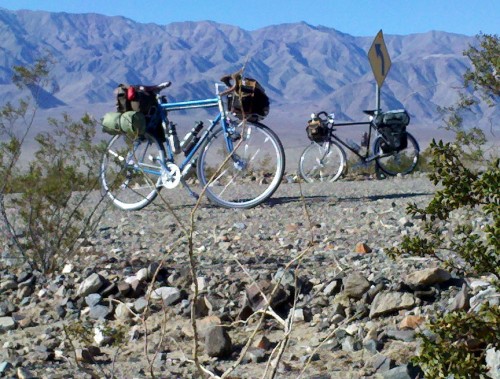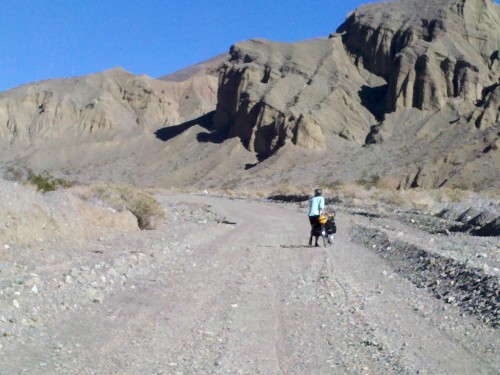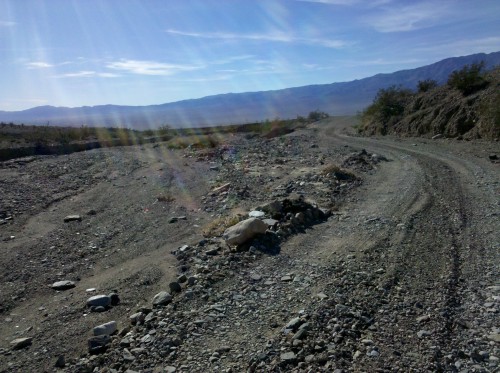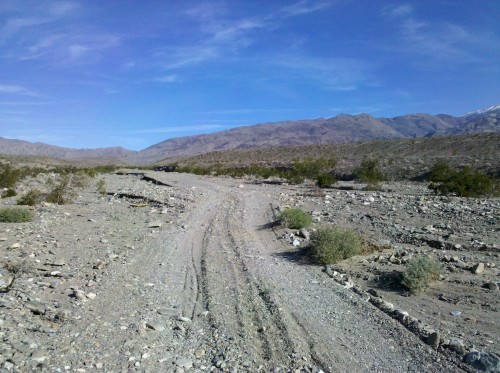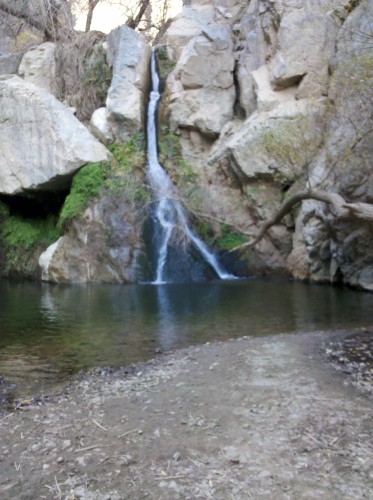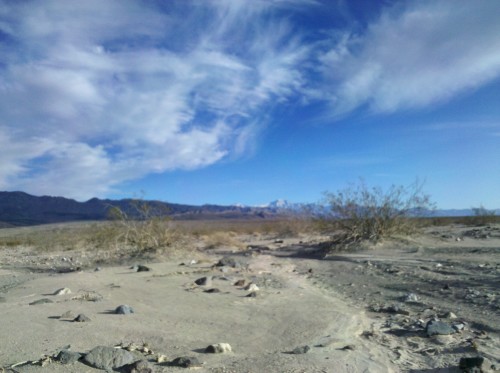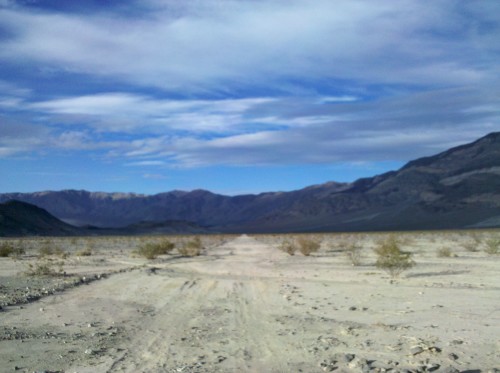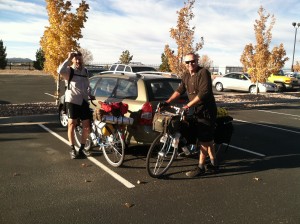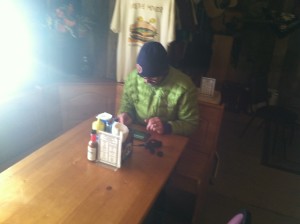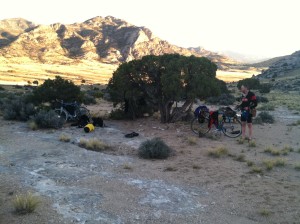We are always looking, hoping and striving for the best possible experience when we head out on a bike trip. Our free time to dedicate to these journeys is limited and valuable and we should do everything in our power to make the most of the opportunity. Many components in this alchemical equation are beyond our control. Weather, terrain, wild animals and innumerable other factors will all have a say in what we have to cope with out on the trail. We can try to plan and prepare for some of these unknowns but they are beyond our influence.
However, there are also key ingredients in an enjoyable bike trip that are wholly up to us. Our planning, preparation and packing all have the potential to make or break a trip. In hopes of improving our experience the next time, we look back upon returning to see what lessons can be learned. How did your planning, preparation and packing work out? What worked and what didn’t? What would you do differently next time? As you unpack, you have the opportunity to take a second look and assess your approach. Is there anything buried in the bottom of your bags that you had forgotten was there? Do you still have two pounds of food left over? By paying attention to these things during and after your trip, you’ll be able to learn from your mistakes and keep from repeating them in the future.
So, in hopes of offering some insight into this process, I’ll go through my unpacking and look back on the recent Smoke ‘n’ Fire 400. In doing so, I hope other new bikepackers and tourists will learn from my successes and failures so they can make their own mistakes rather than repeating mine! You may remember my Packing List and Planning posts on this blog. If you haven’t seen those I’d go back through them for the relevant background information.
Planning:
Overall, I’m pretty happy with my approach to the route. Given my lack of fitness and unfamiliarity with most of the terrain, I was well aware that any major setback could easily put me into a position where I would need an extra day to complete the route. So, I set out on Wednesday morning hoping to finish the ride before dark on Saturday but prepared to be out another night and finish on Sunday if needed. However, things went well out there and I was able to make it back to Boise’s Hyde Park neighborhood just before 7:00pm on Saturday. I was a bit disappointed to miss happy hour but the post-ride beer tasted just as sweet.
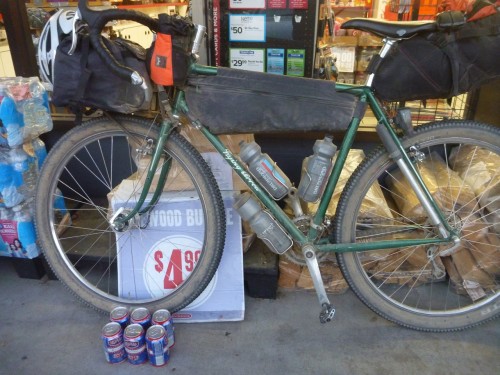
My daily distance goals proved to be attainable, though perhaps more difficult to reach than I expected. I’ll also admit to underestimating the amount of time the tougher climbs would require and the physical toll they would take. When planning, it is easy to be overly optimistic and forget how grueling long climbs can be on a loaded bike and I fell into that trap. Because of my lack of respect for the climbs – especially the grind up to the Dollarhide summit – I fell short of my goal to reach Redfish Lake on the second night. Looking back, I made the right call to stop and bed down rather than push on longer into the night. I made up the difference the next day over more level terrain and made it to Deadwood Reservoir on night 3 with daylight to spare.
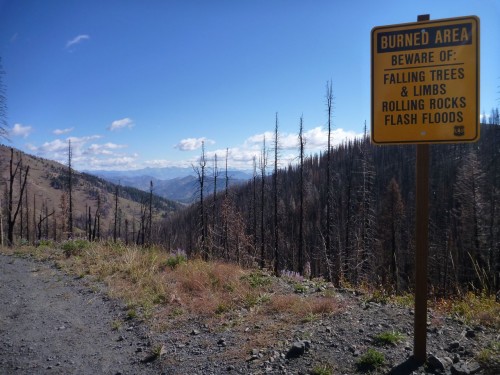
On a navigational side note, I did have some difficulties with my Garmin. I don’t know if other riders had similar experiences with their GPS equipment but my Edge 500 seemed to be struggling to communicate with its satellite and was very slow to update my position. Not a lot of satellites over Idaho, perhaps? I wasted a good deal of time standing still, waiting for it to re-find the route after going off-course. I was glad to have the Garmin but learned to keep the cue sheet handy to avoid missing turns. A handlebar bag with a map case is an ideal place to carry a map or cues and I’d like to experiment with different front carrying setups on future rides. Storing it under the strap on my handlebar bag works but is far from ideal.
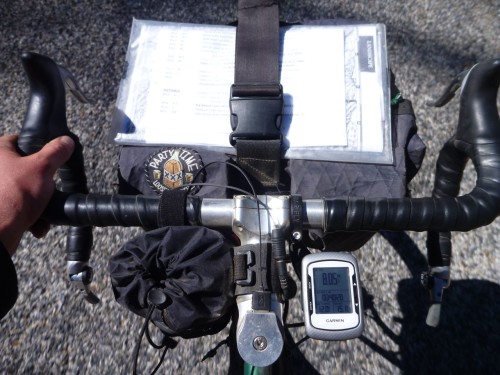
Also, I was very happy with the Revelate Feed Bag and found it to be a perfect addition to my cockpit. The ease of access to my trail mix and other snacks was excellent and allowed me to keep a constant flow of food coming in. The outer mesh pockets also provided a perfect place to stuff energy bars, empty wrappers, my audio recorder and other small objects that I wanted to keep close at hand. The attachment was simple and secure, though the stabilizer strap that loops under the fork crown was just barely long enough for my bike. Riders on more modern mountain bikes with tall forks and short head tubes won’t have problems but folks with high handlebars and non-suspension corrected front ends may have to improvise an extension to the strap.
Preparation:
I was not in the best of shape coming into this event. Other than quick rips on the mountain bike up in the Boise foothills and riding to get around town, I haven’t been on the bike much since returning from my short trip on the Hot Springs route back in July. Given that less than three weeks intervened between my hearing of the event and taking the start on September 10, there really wasn’t time for training. Mostly, I just focused on sleeping well, getting quality food in me and drinking enough water. Given that I much prefer hoppy beverages to plain water, this can be a challenge! I was certainly well-rested and had the leftover base from my other long rides this summer to get through the Smoke ‘n’ Fire but suffered more than I would have liked. I made up for my lack of fitness with experience and a conservative approach to the event. I knew I couldn’t afford to take big risks.
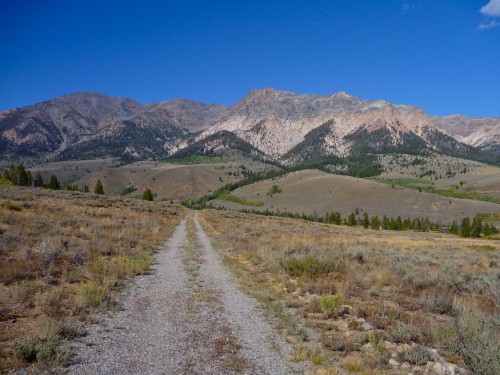
Overall, I measured my efforts well, stayed within my limits and got through each day’s ride about as well as I could expect. I only had one cramp (while putting socks on in my bivy), consistently ate and digested well and only had a small handful of nagging aches and pains beyond the normal soreness and fatigue. I had some pain in my achilles tendons, usually a symptom of a too-high saddle. I dropped it 2-3mm on the second day and things improved a bit. I also had some minor saddle sores and chafing. This could also be attributed to the too-high saddle forcing me to rock my hips on the seat. This point illustrates the need to put in plenty of pre-trip miles on the bike you’ll be touring or bikepacking on. Had I been riding the RandoGnar and not my mountain bike for the weeks before the race I would have discovered the saddle issue beforehand and corrected it before it caused issues.
On a related bike-preparation note, this ride certainly pushed the limits of singletrack riding that I would knowingly undertake with my current handlebar configuration. I love all the hand and body positions that my long-reach, deep-drop handlebars offer on easier terrain but they place me at a disadvantage when things get steep, rough or technical. For future trips with more singletrack riding, I’d switch to a more upright handlebar configuration. Something like the Jones H-Bars might be ideal as they offer a wide range of hand and body positions and would put me in a stronger position to attack difficult terrain.
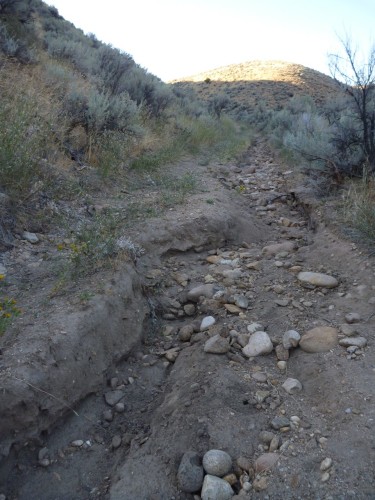
Packing:
It is easy to nerd out over this department. Sure, there are map nerds and fitness nerds out there too with their own brand of dorkery but nobody nerds out like gear nerds. You know the signs. You’ve seen the shelves and closets overflowing with x-pac, down, silnylon, titanium and carbon fiber. I’m talking about computerized spreadsheets with a few-thousand bucks worth of outdoor gear and bike parts all described, tagged, weighed, starred, “faved” and color-coded. And of course, everyone’s favorite obsession – light weight – is actually kind of a big deal when you’re talking about pedaling the whole mess up and down mountains for a few days. However, any factor in your planning, preparation or packing stands to wreck your trip if you screw it up – no one more than the others – so don’t forget to do your due diligence in other areas. Don’t let the gear get in the way of the experience.
I try to choose gear that is space-efficient and functional and try not to obsess about the weight. I can’t afford to re-outfit myself with the ideal kit for every trip so I’d rather purchase gear that is versatile and durable. For the most part, I think I packed well. I used every piece of gear I carried except for the ones I always hope not to use: tools and first aid.
However, the colder-than-expected temperatures in the low twenties (one night set a record low near Stanley) certainly pushed the limits of my equipment. If I had gone any lighter on shelter or clothing I could have easily gotten dangerously cold. I had a tough time keeping warm through my second-night bivy at the bottom of the Williams Creek Trail, high up in the Wood River Valley.
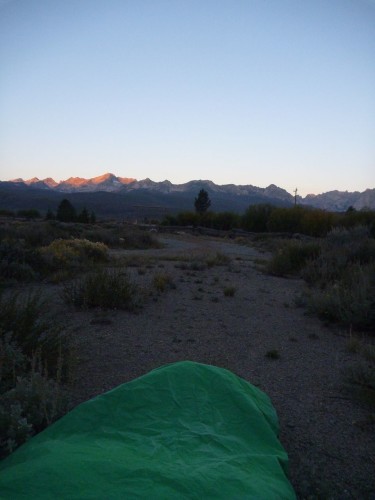
The frigid air seemed to sneak in through imaginary drafts in my bivy and sleeping bag though both were zipped and cinched tight except for a small breathing vent to prevent buildup of condensation inside the bivy. My feet suffered the worst of it. They were just starting to warm up and come back to life after some jumping jacks until I got back on the bike. The icy wind pierced my meshy shoes like needles. I improvised toe covers from a pair of ProBar wrappers (inserted over my socks, inside the shoes) which helped cut the chill and retain some heat.
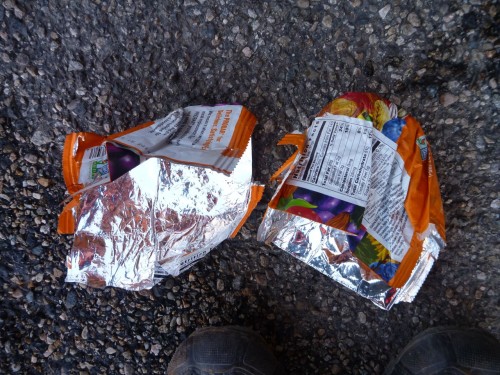
More substantial gloves, toe covers and/or chemical warmers in my shoes would have made the chilly mornings much less painful. Also, despite the lack of extra space in my bivy, I’ll be sleeping with my shoes on future trips where lows are expected to be below freezing. All the icy metal, plastic and carbon fiber in the soles of my shoes sucked the heat out of my feet faster than my blood could circulate.
Food-wise, I was pretty happy with what I carried and how much. I made one resupply stop in Stanley where I purchased some additional ride food (beef jerky, Baby Ruth, Snickers, Mr. Goodbar, two bananas) and supplements (pouch of chunk chicken, Ramen noodles) for my final dinner on the trail.
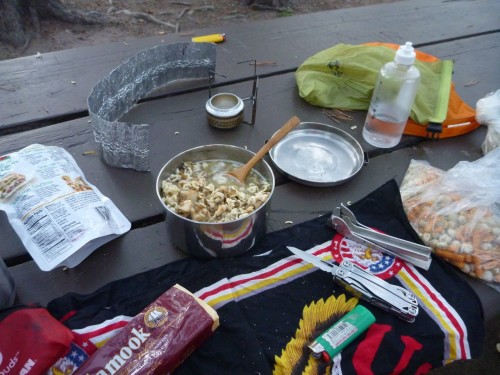
I stopped at some of the convenience/general stores along the way when they were available for cold drinks and to refill water. I also enjoyed a beverage stop with some new friends at the Featherville Saloon on day 1 and an amazing breakfast on the morning of day 3 at the Redfish Lake Lodge.
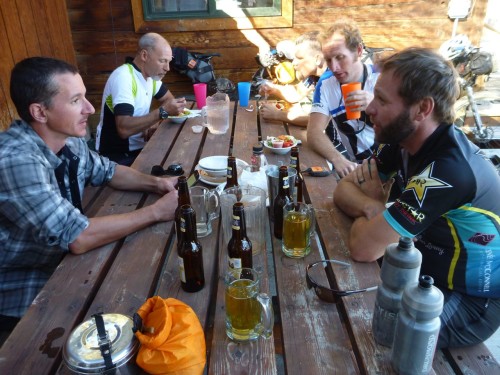
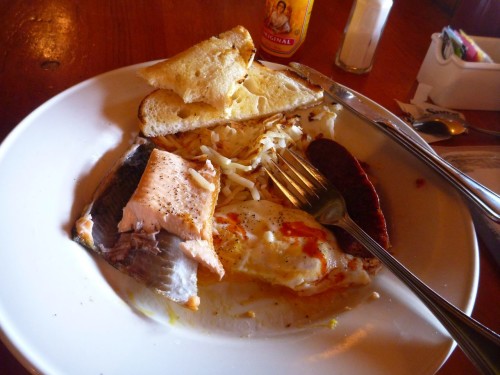
Aside from these little luxuries, I ate and drank only what I carried and was able to ride safe in the knowledge that I had plenty of calories on board, could filter water from any of the many streams on the route and cook up a hot meal whenever appropriate. Conversely, with good route and resupply information, proper planning and measured riding, one could tackle this route (as many did) with a bare minimum of food on the bike, relying on services in towns and outposts along the way. Although a more expensive way to travel, this tactic certainly has its benefits as food gets heavy fast. It would have been easy to drop several pounds of weight off my bike by leaving the cookset and camp food at home but I would have had to sacrifice a good deal of my self-sufficiency and independence. For my purposes, it wasn’t worth it.
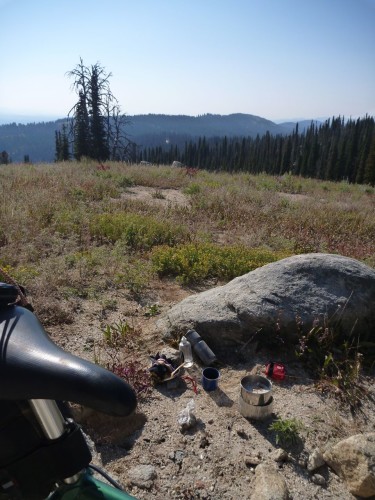
I rode into the darkness on both of the first two nights and found my lighting setup to be nearly ideal. The combination of the dynamo-powered headlight fixed to my front rack and the USB-rechargeable lamp on my helmet worked well in a variety of conditions. I could use the low, wide, bright beam cast by the dynamo light for most roads and supplement that light with the headlamp’s powerful spot for singletrack or whenever a more precisely-directed beam was needed.
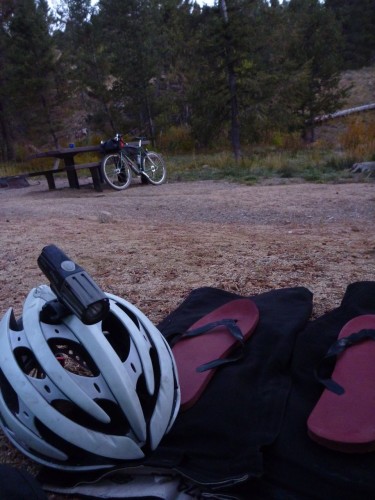
This system really proved itself on the second day. I had used the CygoLite for the last couple of hours on my first evening’s ride and continued to employ it while I cooked my dinner and made camp that night. I plugged it into the Sinewave Cycles Reactor as shadows began to grow long on the second day, got it topped back up to a full charge and used it for three or four solid hours on the second night to get me through the Fisher Creek/Williams Creek singletrack section under the light of the stars. This descent was one of the highlights of the trip and would not have been any fun at all with sub-par lighting.
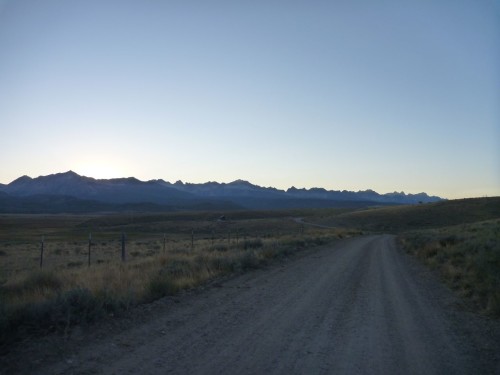
Looking back, it is hard to see this ride as anything other than a great success. Even so, I’m still looking forward to refining my approach to future rides and applying what I’ve learned. I hope these posts have been helpful and entertaining. Feel free to leave your questions and comments below. Thanks for reading!

